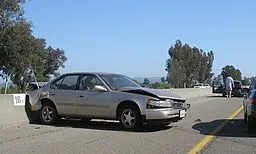
Injured Passenger Claims
Injured Passenger Claims Injured Passenger Claims I’m Ed Smith, a Grass Valley auto accident attorney. If you’re a passenger in a vehicle that has been…


Injured Passenger Claims Injured Passenger Claims I’m Ed Smith, a Grass Valley auto accident attorney. If you’re a passenger in a vehicle that has been…

S.Z. The Importance of Financial Responsibility: Uninsured and Underinsured Motorists Whether you just purchased a new car, switched insurance providers, or are wondering where to start on…

Many employees drive company vehicles either to and from work or for specific company related tasks. Wrongful death claims can be brought against a driver’s…

The good news is that restraints in motor vehicles have become optimized so people have a lesser incidence of upper body damage. Little attention has…

Maxillofacial and cranial trauma are common phenomena in severe motor vehicle accidents or falls from great height. There is a large variety of traumas that…

Water sports are becoming more popular around the world. People are spending more time racing boats, water skiing, scuba diving and skin diving. Injuries because…

Children have a higher likelihood of being injured or killed from trains than adults. They like to play on train tracks and have a lesser…

Approximately every 115 minutes, someone or something is struck by a train; almost 50 % of all collisions happen at railroad crossings when the automatic…

Traumatic hemipelvectomies are rare traumatic injuries with a forty percent mortality rate. It happens when half of the pelvis from the pubic symphysis to the…

Motor vehicle rollover accidents are accidents in which the motor vehicle ends up on its side or on its back. In other words, there is…

Finger amputations may sound small but they really cause a lot of changes in the way the patient performs certain activities, such as punching the…

Above the elbow amputations are also called trans-humeral amputations and are more difficult than below the elbow amputations to fit with prostheses that are comfortable…

Unfortunately, kids can be involved in motor vehicle accidents. Hopefully, they are properly restrained and have no problems following an accident. However, some accidents are…

When looking at motorcycle and other motor vehicle accident statistics, it’s clear that there are more accidents for motorcycles than there are for motor vehicles….

Motorcyclists are in a unique position as riders on the road. They ride on two wheels, which is an inherently unstable position. They ride without…

Guardrails are found on roads and are designed to keep vehicles from traveling into an area more dangerous than the road. They often deflect the…